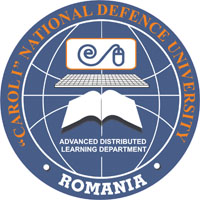ONE STEP AHEAD: FROM WEB 1.0 TO WEB 2.0 TECHNOLOGIES IN HIGHER EDUCATION
ONE STEP AHEAD: FROM WEB 1.0 TO WEB 2.0 TECHNOLOGIES IN HIGHER EDUCATION
Author(s): Virginia Mihaela DumitrescuSubject(s): Education
Published by: Carol I National Defence University Publishing House
Keywords: Web 1.0 and Web 2.0 Technologies; connectivism; learning environments; learner creativity; intellectual autonomy
Summary/Abstract: The present paper explores some of the reasons why technology integration is a must of 21st century education, and looks at the practical benefits of using technology in conjunction with new approaches to teaching and learning based on the connectivist theories of cognition and instruction that best support the present-day student-oriented educational paradigm. It looks at the necessity (confirmed by our first-hand experience with students of the Bucharest University of Economic Studies) to keep the education process in sync with the spirit of our times, or the way the highly digitized world outside the classroom has come to approach communication, knowledge/information acquisition, meaningmaking, problem-solving, and even socializing and entertainment. It outlines the evolution of computerassisted instruction from its early stages marked by more static learning tools and (Web 1.0) technologies that place students in the less intellectually stimulating situation of receptacles or consumers of Internet knowledge, to the more recent, more evolved and dynamic Web 2.0 technologies and learning environments that lead to the emergence of new models in education, facilitate student interaction, collaboration and creativity, and enable mind-stretching and enjoyable learning experiences. After examining various psychological and behavioural changes in both teachers and learners as a result of incorporating technology in the education process, the paper focuses on the importance of technology use in tertiary education, where the increased complexity of the learning content calls for more sophisticated and diversified instruments of teaching and learning that may develop students’ intellectual autonomy, creativity and adaptiveness, along with their critical thinking, continuous learning and professional skills, preparing them for a more and more competitive and challenging work environment.
Journal: Conference proceedings of »eLearning and Software for Education« (eLSE)
- Issue Year: 11/2015
- Issue No: 02
- Page Range: 143-150
- Page Count: 8

